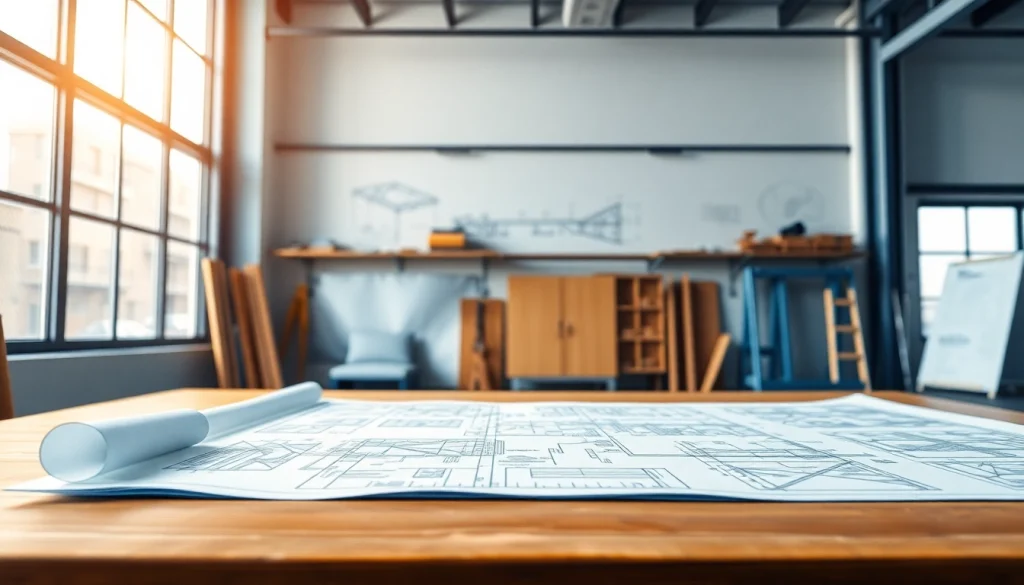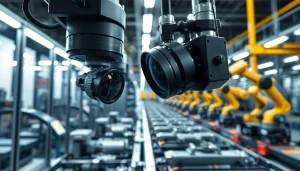Mastering Steel Structure Design: Best Practices and Key Considerations

Understanding Steel Structure Design
Steel structure design is a crucial aspect of modern architecture and engineering, influencing not only the safety and resilience of structures but also their aesthetic appeal and functionality. The process begins with a clear vision, which evolves through various stages of planning, analysis, and execution. An effective design must account for numerous factors, including environmental impacts, load-bearing capacities, and material specifications. Mastering the art of steel structure design involves understanding both theoretical concepts and practical applications, ensuring that every element works harmoniously within the overall structural system.
What is Steel Structure Design?
Steel structure design refers to the methodical approach to constructing buildings and frameworks primarily consisting of steel. It encompasses a wide range of activities, from the initial brainstorming of ideas to creating detailed, crafted designs that meet both functional and aesthetic criteria. Structural engineers and architects collaborate closely during this process to ensure that the final output is not only safe and robust but also visually appealing. The steel structures may range from simple frameworks—like garages and warehouses—to complex high-rise buildings and bridges.
Importance of Steel Structure Design in Construction
Steel structures dominate the construction landscape due to their unparalleled strength-to-weight ratio, allowing for larger spans and lighter designs compared to traditional materials like concrete or timber. The significance of steel structure design lies in several key areas:
- Durability: Steel is resistant to various environmental stresses, including high winds, earthquakes, and corrosion, making it an ideal material for long-lasting constructions.
- Cost Efficiency: Steel’s availability and the ability to pre-fabricate components contribute to lower costs in terms of time and resource management.
- Flexibility: Steel structures can be designed to accommodate future expansions or modifications with relative ease.
- Speed of Construction: With advancements in technology, steel structures can be erected faster than traditional constructs, leading to shorter project timelines.
Key Components of Steel Structure Design
Several vital components form the backbone of steel structure design, each playing a critical role in the overall success of the project:
- Beams: Horizontal structural elements that support loads and transfer them to vertical members.
- Columns: Vertical elements that carry the weight of the structure above and distribute loads to the foundation.
- Trusses: Frameworks of beams that create stable structures while minimizing materials used, suitable for roofs and bridges.
- Bracings: Diagonal members that provide stability and help prevent lateral movement caused by wind or seismic activity.
Principles of Steel Structure Design
Load Considerations for Steel Structure Design
A comprehensive understanding of load considerations is essential in steel structure design to ensure safety and integrity. Steel structures must withstand various loads, including:
- Dead Loads: The permanent static loads from the weight of the structure, including elements such as beams, columns, and finishes.
- Live Loads: Variable loads that occur during usage, such as people, furniture, and equipment.
- Environmental Loads: External forces from nature, including wind, snow, and earthquakes, that affect structural stability.
Design Codes and Standards for Steel Structures
Following appropriate design codes and standards ensures that structures are safe, reliable, and conform to legal regulations. Some of the most recognized codes include:
- American Institute of Steel Construction (AISC): Provides guidelines on the design, fabrication, and erection of steel structures.
- International Building Code (IBC): Includes safety and performance standards applicable to all construction projects.
- Eurocode: A set of European standards covering the design of various structural systems including steel.
Material Specifications in Steel Structure Design
Material specifications play a pivotal role in determining the performance and suitability of steel structures. Key considerations include:
- Steel Grades: Different grades of steel offer varying strengths and properties, affecting the design choices.
- Corrosion Resistance: Steel members might require coatings or treatments to protect against rust and deterioration, especially in harsh environments.
- Weldability: The ability of steel to be welded effectively impacts joint design and overall integrity.
Advanced Techniques in Steel Structure Design
Software Tools for Steel Structure Design
The introduction of advanced software tools has significantly improved the efficiency and accuracy of steel structure design. Programs like AutoCAD, Tekla Structures, and SAP2000 allow engineers to create detailed models, run simulations, and perform complex load calculations with ease. These tools facilitate quicker iterations during the design process, enabling modifications without extensive manual calculations.
Modeling and Simulation in Steel Structure Design
Modeling and simulation techniques are essential for predicting how a structure will behave under various conditions. Finite Element Analysis (FEA) is one of the most widely used methods, allowing engineers to visualize stress distribution, potential failure points, and overall performance before actual construction begins. This proactive approach reduces risks and helps in refining designs to maximize safety and efficiency.
Analyzing Structural Integrity in Steel Structures
Evaluating the structural integrity of steel structures involves detailed assessments of the materials, connections, and overall configuration. Common analysis methods include:
- Static Analysis: Assessing structures under static loads to ensure they can withstand normal usage scenarios.
- Dynamic Analysis: Evaluating how structures respond to dynamic loads, such as impulses or vibrations, often crucial for earthquake-prone regions.
- Fatigue Analysis: Investigating how repeated loading cycles affect the integrity and longevity of structural components.
The Process of Steel Structure Design
Step-by-Step Approach to Steel Structure Design
The steel structure design process generally follows a systematic approach that includes:
- Concept Development: Initial brainstorming and rough sketches that outline the project’s vision and objectives.
- Preliminary Design: Developing initial designs while considering loads, materials, and spatial constraints.
- Targeted Analysis: Conducting detailed load analyses to ensure the structure can meet safety requirements.
- Detailed Design: Finalizing drawings, specifications, and all documentation required for construction.
- Verification: Reviewing designs for compliance with relevant codes and conducting peer reviews where necessary.
Common Challenges in Steel Structure Design
Steel structure design presents several challenges that can impact project outcomes, such as:
- Balancing Cost and Quality: Striking the right balance between budget constraints and the desired structural integrity can be difficult.
- Site Limitations: Physical constraints at the site can affect design choices and potential structural configurations.
- Adherence to Codes: Staying updated with changing regulations and codes can be challenging but is essential for compliance.
Best Practices for Optimizing Steel Structure Design
To overcome challenges and enhance steel structure design, consider implementing these best practices:
- Embrace Collaboration: Foster open communication among all team members, including architects, engineers, and builders, to prevent discrepancies.
- Utilize Advanced Tools: Leverage design software and modeling tools for accurate simulations and data-driven decisions.
- Plan for Flexibility: Design structures that can easily adapt to future needs, considering installation and modification scenarios.
Real-World Examples of Steel Structure Design
Case Studies in Innovative Steel Structure Design
Examining successful case studies can provide valuable insights and inspire future projects. Notable examples include:
- The Burj Khalifa: The tallest building in the world demonstrates the strength of steel in high-rise construction, featuring an innovative ‘buttressed core’ design.
- The Golden Gate Bridge: A monumental feat of engineering, this iconic suspension bridge showcases the use of steel cables and trusses for both beauty and stability.
- The Louvre Pyramid: This glass and steel structure blends modern design with historic architecture, highlighting the versatility of steel in aesthetic applications.
Lessons Learned from Successful Steel Structure Design Projects
Analyzing successful projects reveals critical lessons for engineers and architects, including the importance of thorough initial assessments, the benefits of close collaboration among teams, and the necessity of testing design concepts against real-world conditions early in the process. These lessons focus on proactive measures that enhance both safety and efficiency.
Future Trends in Steel Structure Design
As technology continues to advance, several trends are shaping the future of steel structure design:
- Sustainable Practices: Increasingly, designers are sourcing eco-friendly materials and incorporating sustainable design principles into their projects.
- Smart Structures: The integration of sensor technologies allows for real-time monitoring of structural health, offering insights that enhance safety and longevity.
- 3D Printing: Exploring the utilization of 3D printing in the fabrication process could revolutionize design and construction timelines.







